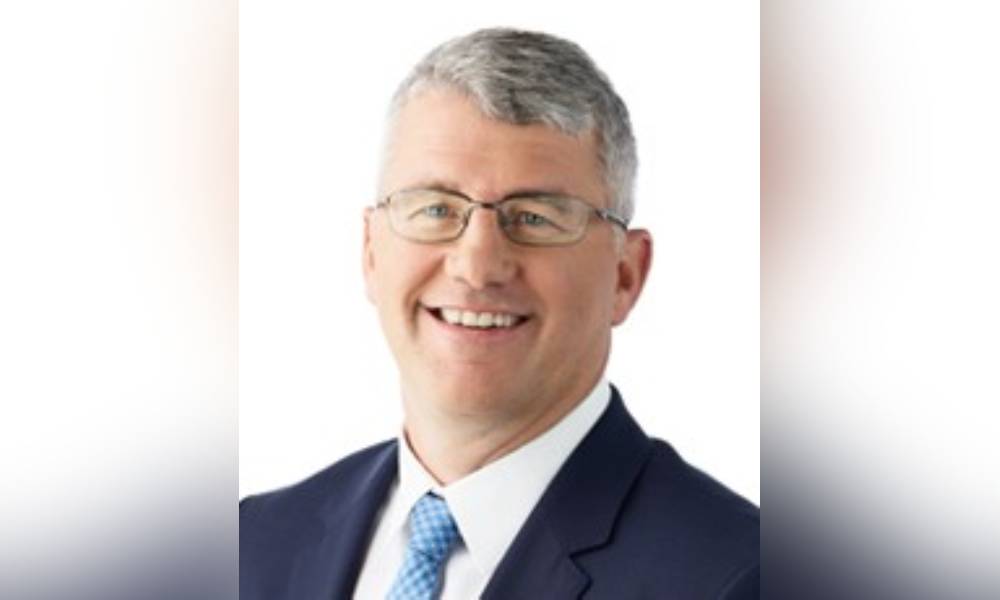As part of our long-term care series, Ron Hanson, of Mackenzie Investments, explains how advisors can help clients address their different retirement phases

This fall, many studies have been pouring out of financial organizations to show the gap that many Canadians are facing – not only in their retirement savings, but also their expectations and preparations – as they face old age. But, they’re also pointing out the areas advisors can help their clients define and address, so they’re better prepared to age well.
Ipsos’ survey for the Canadian Institute of Actuaries, which polled 1,500 Canadians aged 18 and over this summer, showed more than half of Canadians don’t have a retirement financial plan. One in five retirees have less than $25,000 in savings and investments. Only 31% think they’ll experience a physical or mental disability in late life – even though 47% of those aged 75 or more face disability. Almost half of Canadians feel long-term care availability and quality – and their ability to afford it – is poor, but 67% haven’t done anything to plan for their long-term care needs.
Mackenzie Investments’ third annual retirement study isn’t much more heartening. Pollara Strategic Insights did an online random sample of 1,601 Canadians – 851 retired and 750 aged 45+ who were still working – this summer. It noted most working Canadians have started to save for retirement, but only 20% are confident about how to grow their money once retired, and 53% hadn’t thought about it. Only 18% of employed Canadians were confident they’d have enough retirement income and only 29% of retired Canadians were confident their income would last for the rest of their lives.
“The good news is that the overwhelming majority of Canadians – 86% – have started saving for retirement, so they recognize the need to start planning and increase their financial knowledge,” Ron Hanson, Mackenzie Investments’ Winnipeg-based Senior Vice President and Head of Retirement, told Wealth Professional. “But, I think there’s a real gap between the recognition and actual action, so they haven’t formulated a plan. I think the report highlighted that Canadians need help with their retirement plans because there’s a lack of confidence, knowledge, and planning in addition to the gap in how much employed Canadians think they’ll need to save or spend.”
Canadians are facing a lot of unknowns about what lies ahead and how well prepared they are. The employed believe they need to save almost $700,000, while retirees had only saved $327,000. The employed also thought they’d need $3,600 a month to live, while the retirees were living on $2,600 a month.
Hanson said while one-third of employed Canadians want to save between $750,000 and $1 million for retirement, only 14% of retirees had. While employed Canadians also dreamed of travelling, retirees’ priorities were general wellness, living the rest of their lives comfortably, and spending time with family and friends – with travel a distant second.
“There are these gaps,” said Hanson, “so that’s why you need a plan – so you can match up your aspirations and goals with your emotional goals and retirement, and see what you want to do with what your financial capacity is.”
“I think this really reinforces the value of advice,” said Hanson, noting that only half of employed Canadians, and 45% of retirees, use an advisor. “Our study showed those using advisors were more confident, knowledgeable, and better positioned for the future. On average, those households are two times wealthier than those who don’t use an advisor.”
Advisors can help clients define their goals, and create a realistic plan, for each retirement stage – what Hanson calls the early “go-go”, mid “slow-go”, and later “no-go” years – then help the employed determine if they need to delay retirement or retirees consider if they need some work. But, advisors can also point out that people are living longer, so retirement may last more than 25 years – and they probably won’t spend less as they age because of long-term care costs. Hanson noted private long-term care, even on the prairies, can cost more than $30,000 a year – and that doesn’t include inflation or the personal care costs that Toronto “aging specialist” Neela White paid for her parents’ late-life care.
“Some of these things that you have to plan for are unknown, so you need a broad plan that’s flexible and can accommodate different things,” he said. “Planning makes you better prepared, but you can’t prepare for everything.”
But, there are some take-aways – and opportunities – here for advisors.
“I think the key take-way for advisors is Canadians are on the right track,” said Hanson. “They’re saving and they’re thinking about retirement, but they still need your help. You have these large gaps in terms of confidence, knowledge, and outcomes, and what they can spend in retirement really comes down to one question: what do I need to be okay? There are also large differences between your accumulation and decumulation phase of life, the things you have to think about from an investment perspective and the risks you’re taking, and how you create a pay cheque from your savings, but advisors are ideally suited to help solve this problem.
“I think the other thing is less than half of Canadians are using a financial advisor, so the opportunity is huge,” added Hanson. “Investor economics estimates that the financial wealth of the 65 plus population is expected to grow from $1.6 trillion today to $3.5 trillion in 2026. That’s nearly half of Canada’s financial wealth. If you increase the demographic to 55 plus, it’s over $5 trillion – or two-thirds of the total wealth. So, this is a market segment that advisors need to pay attention to. We’ve done a good job as an industry on the accumulation side, but we really need to start now focusing on the decumulation and retirement income and helping Canadians determine what they need to ensure their future.”



